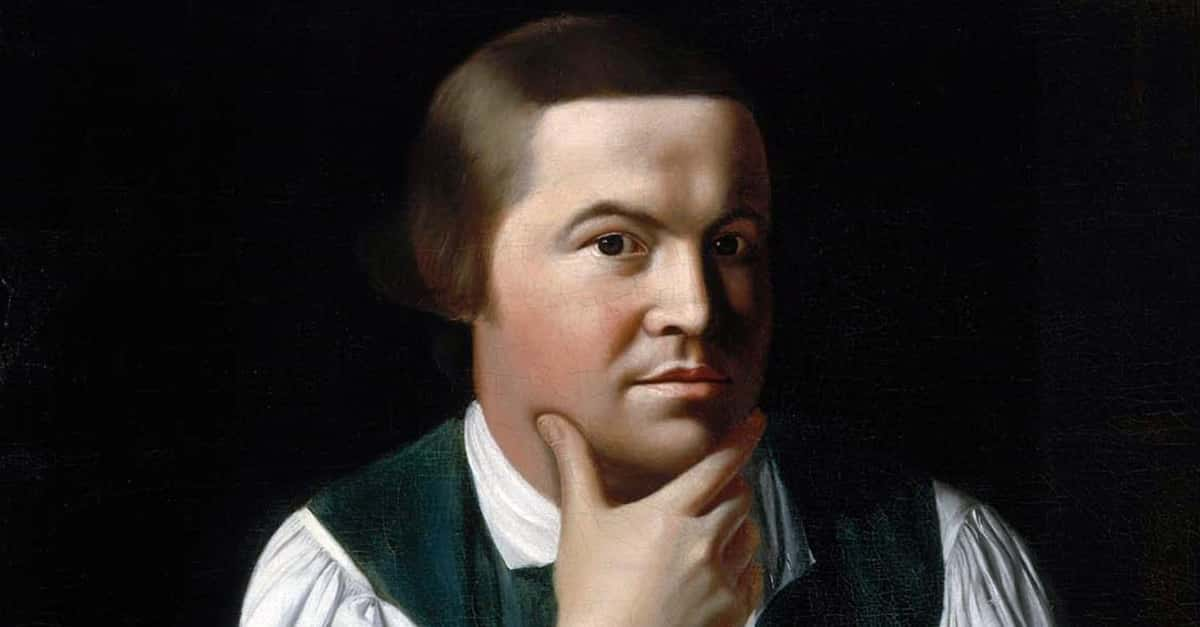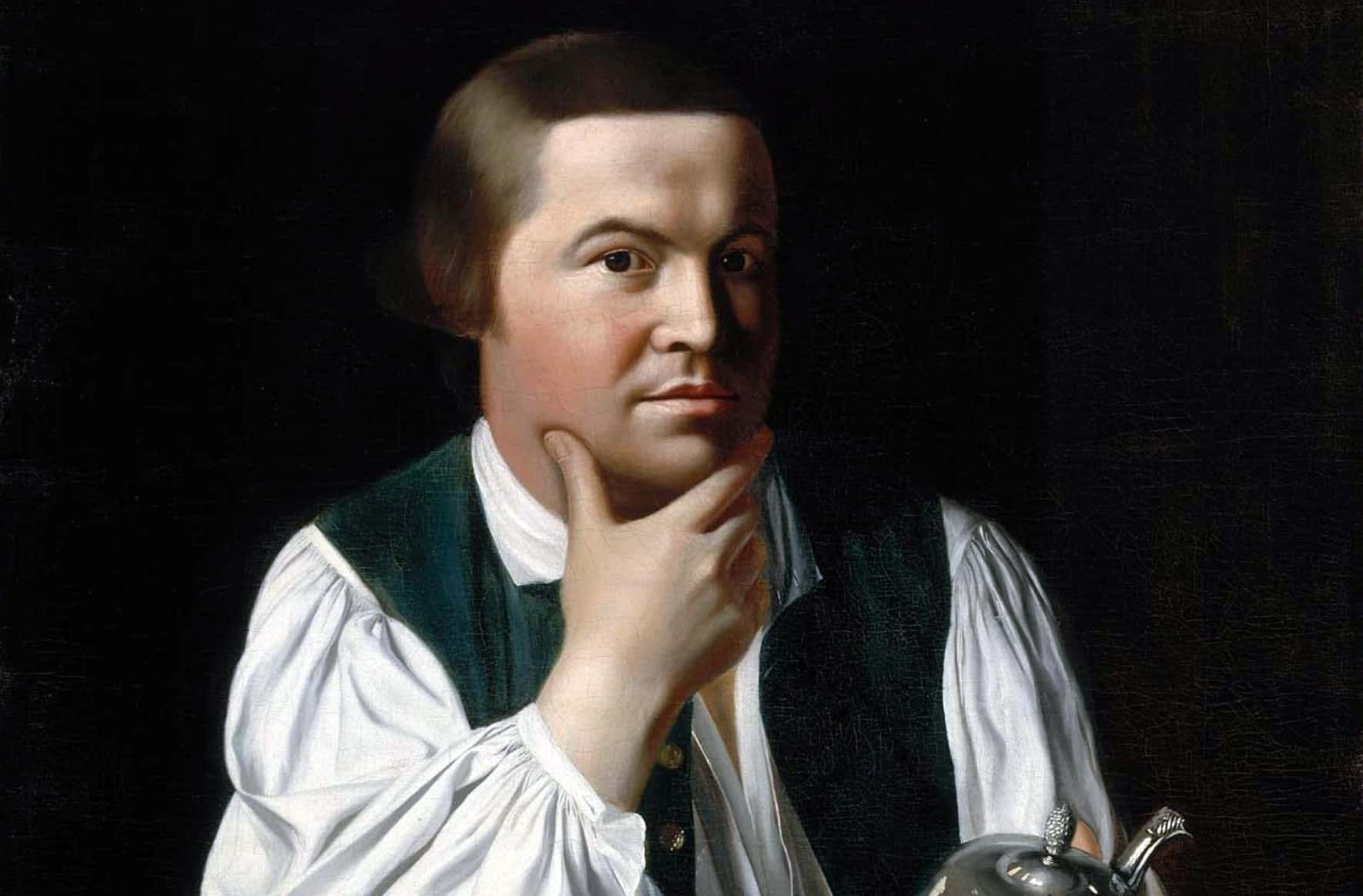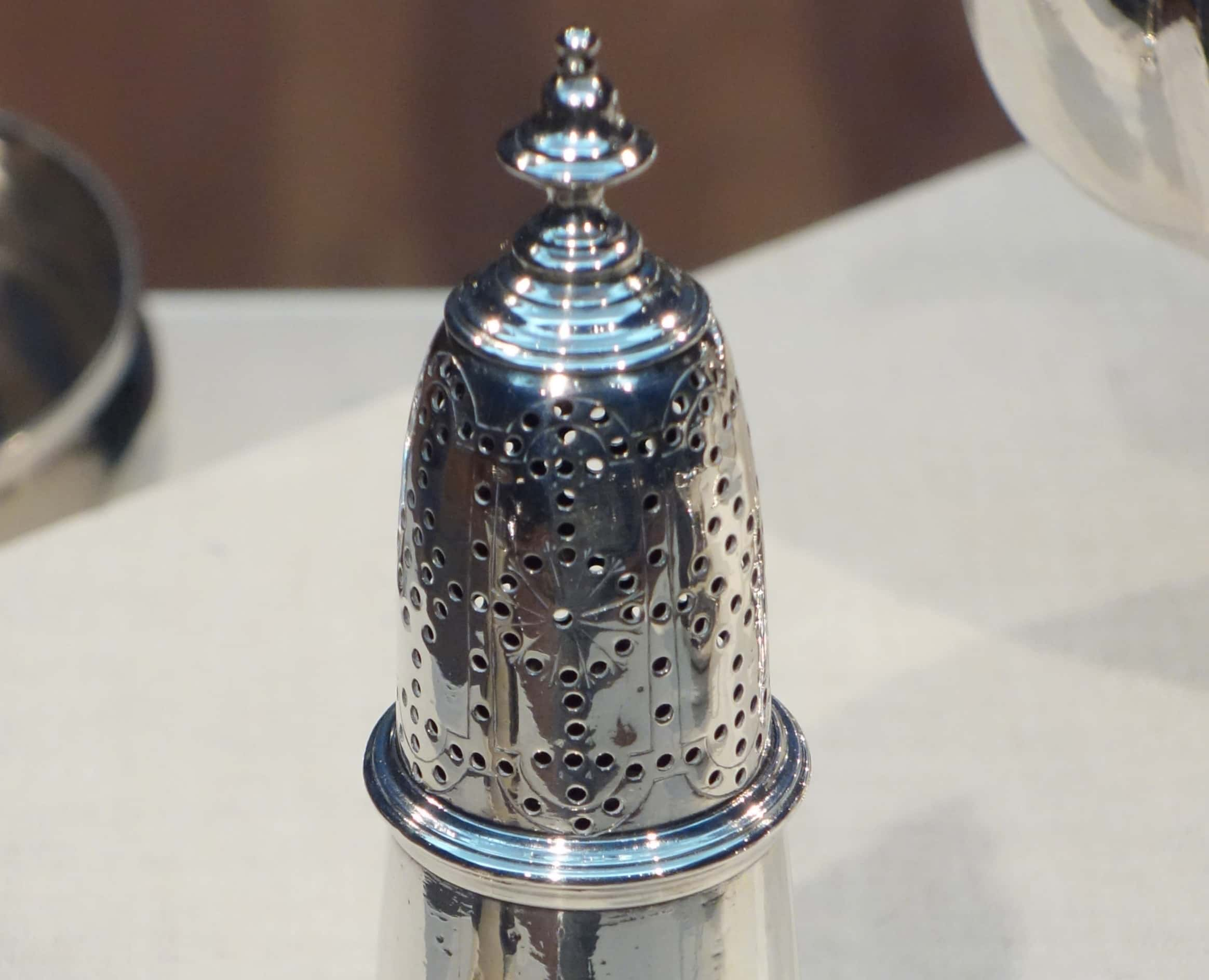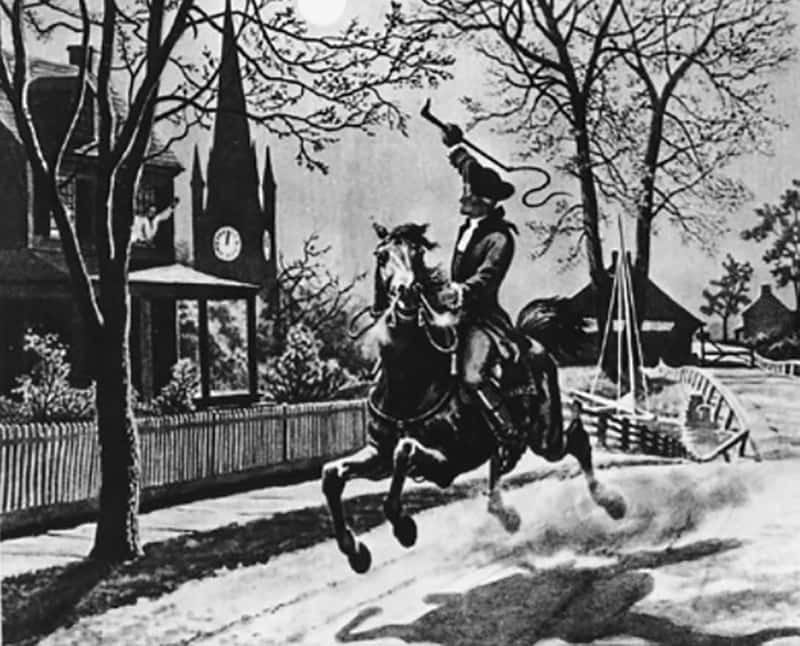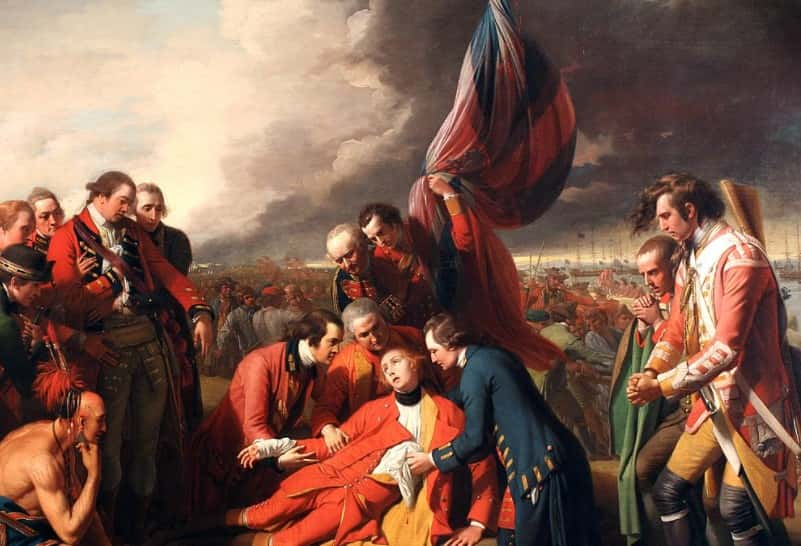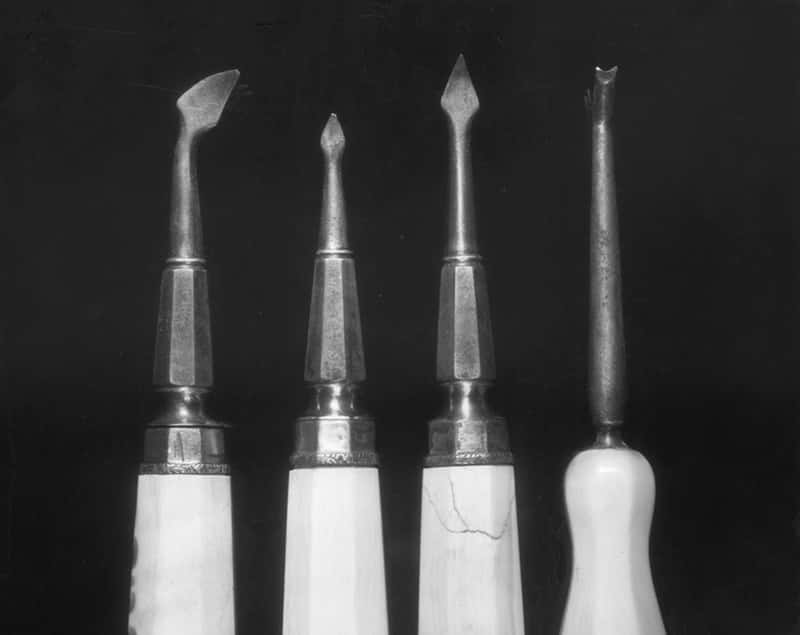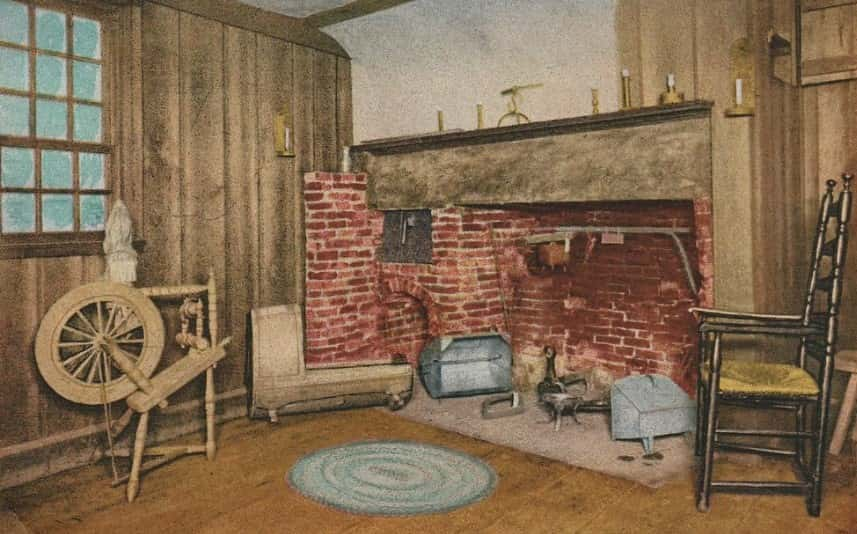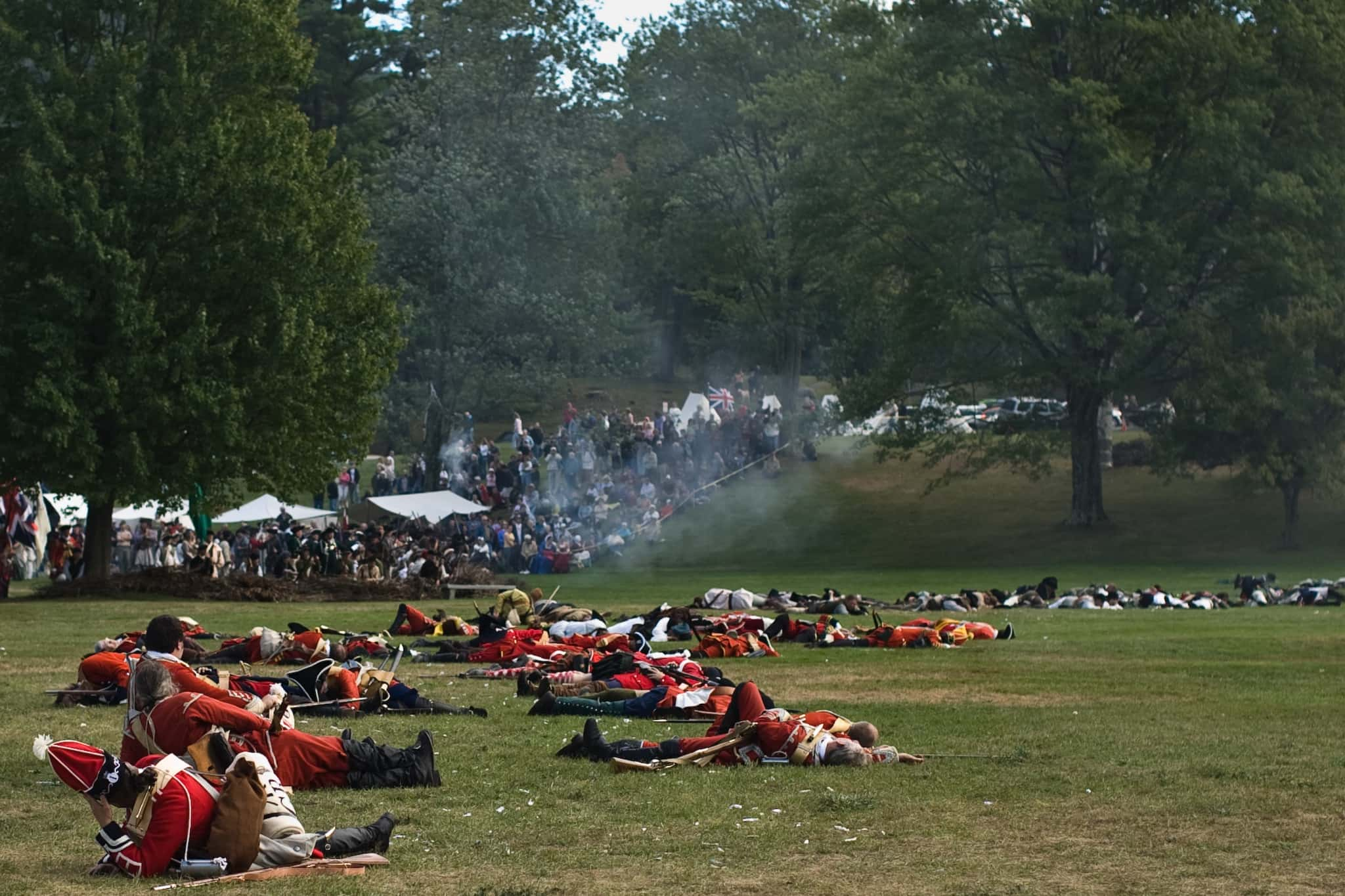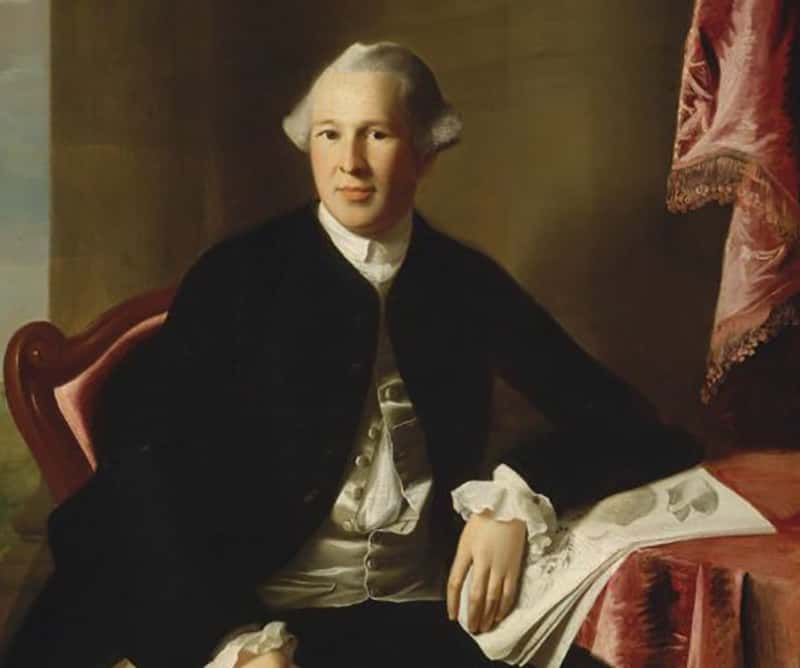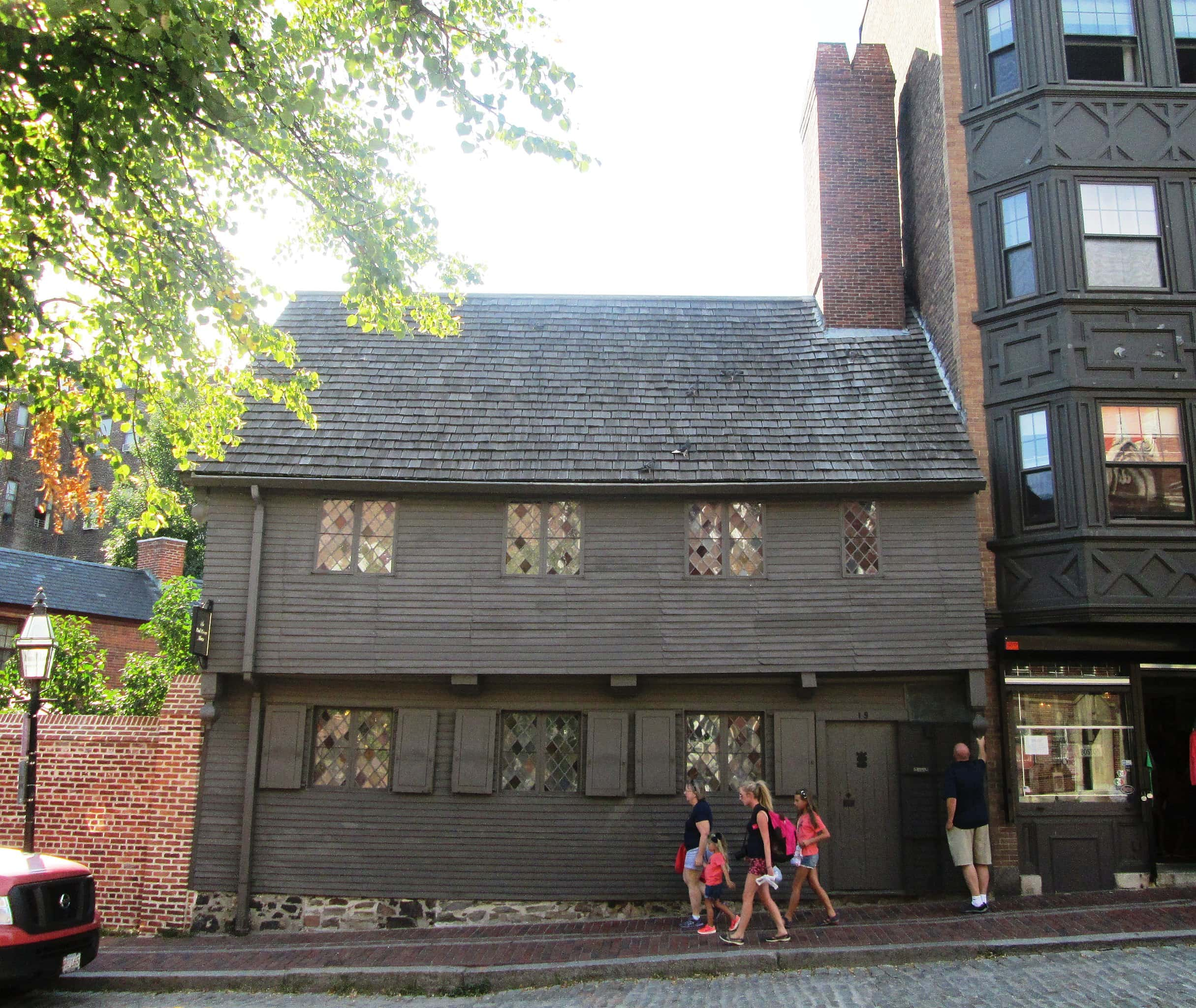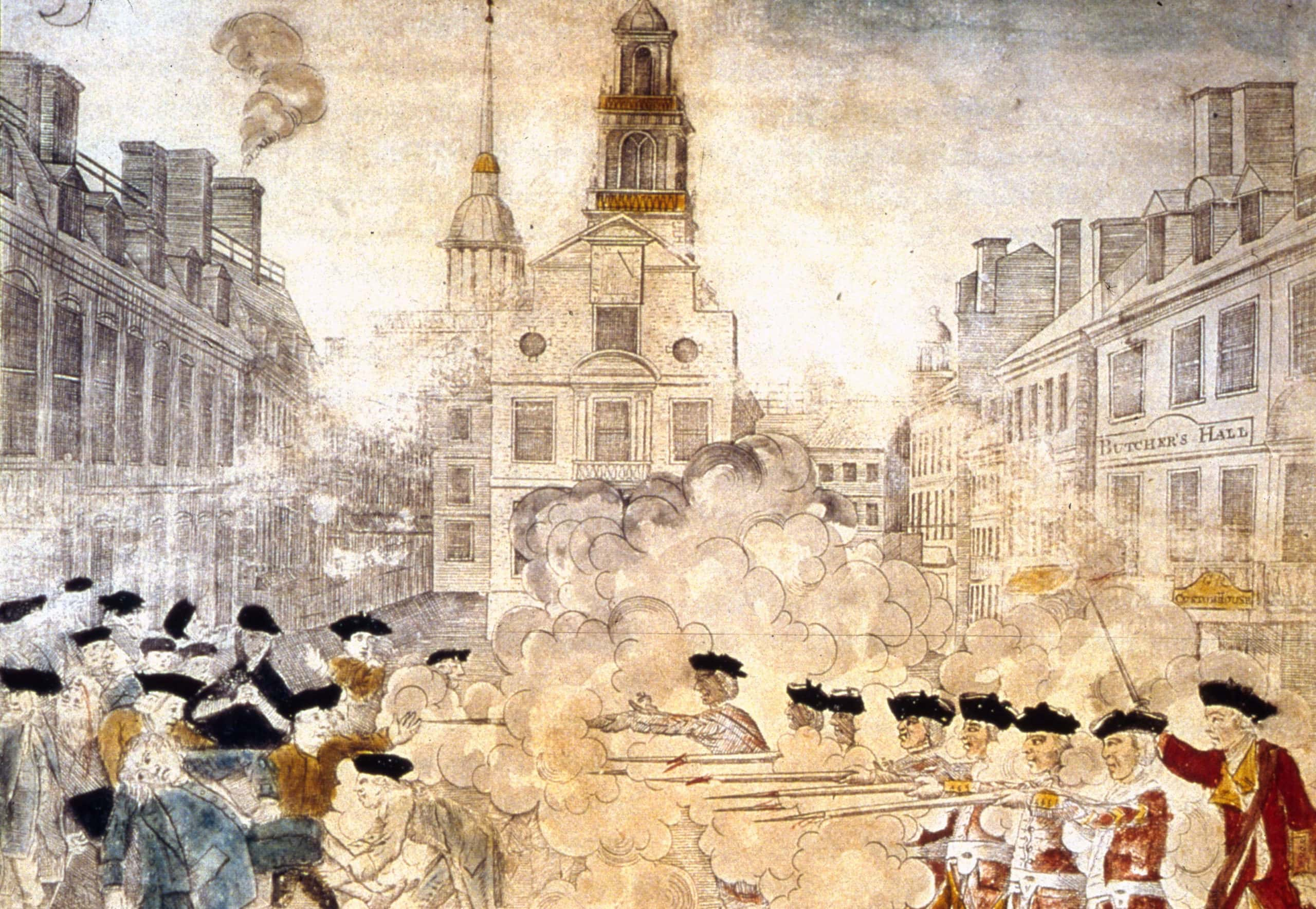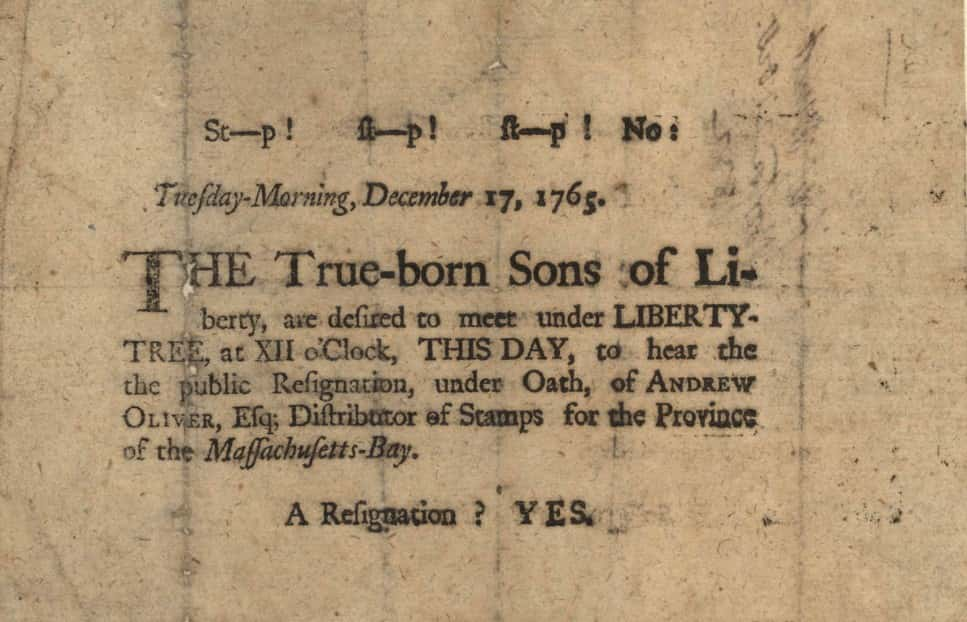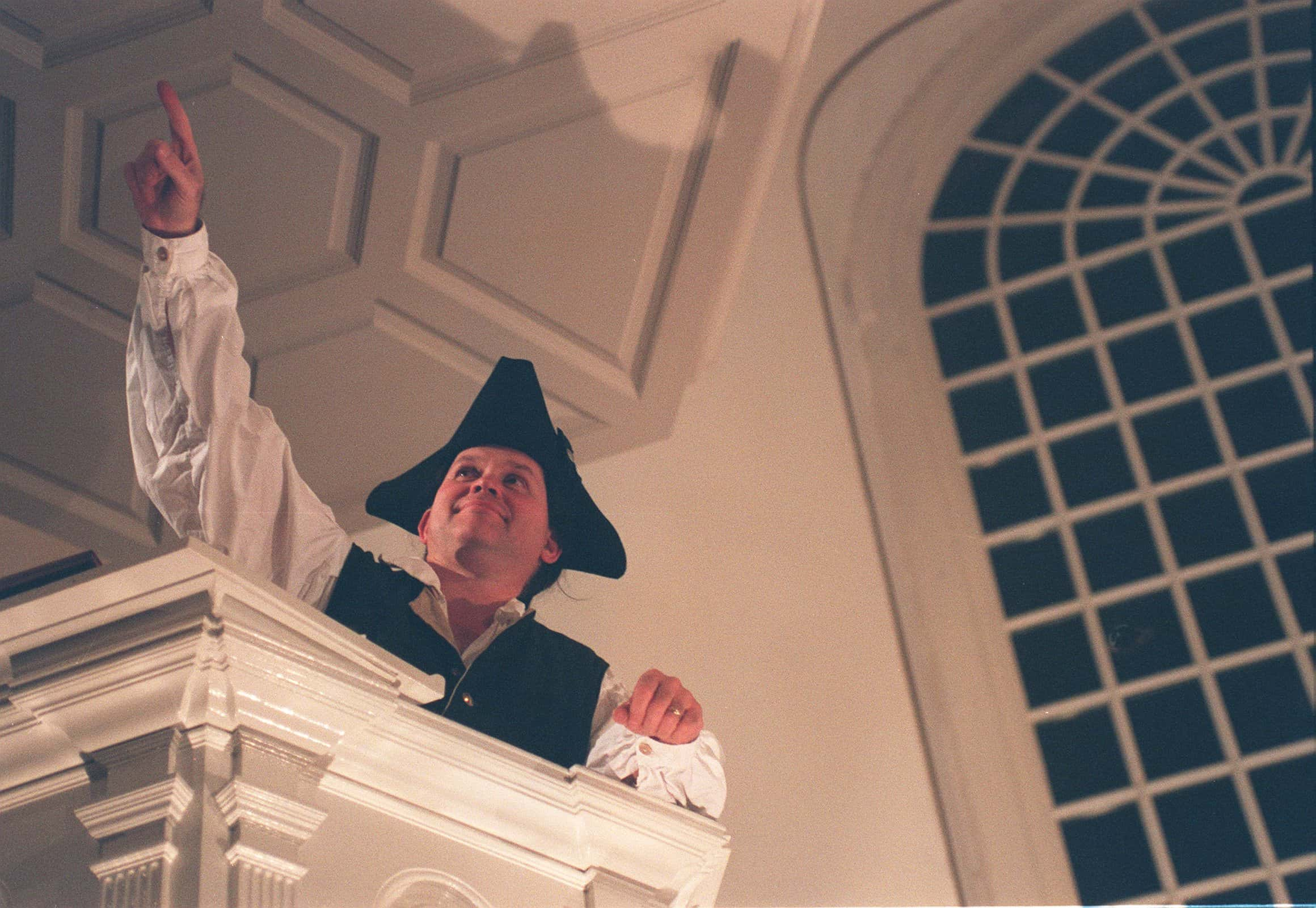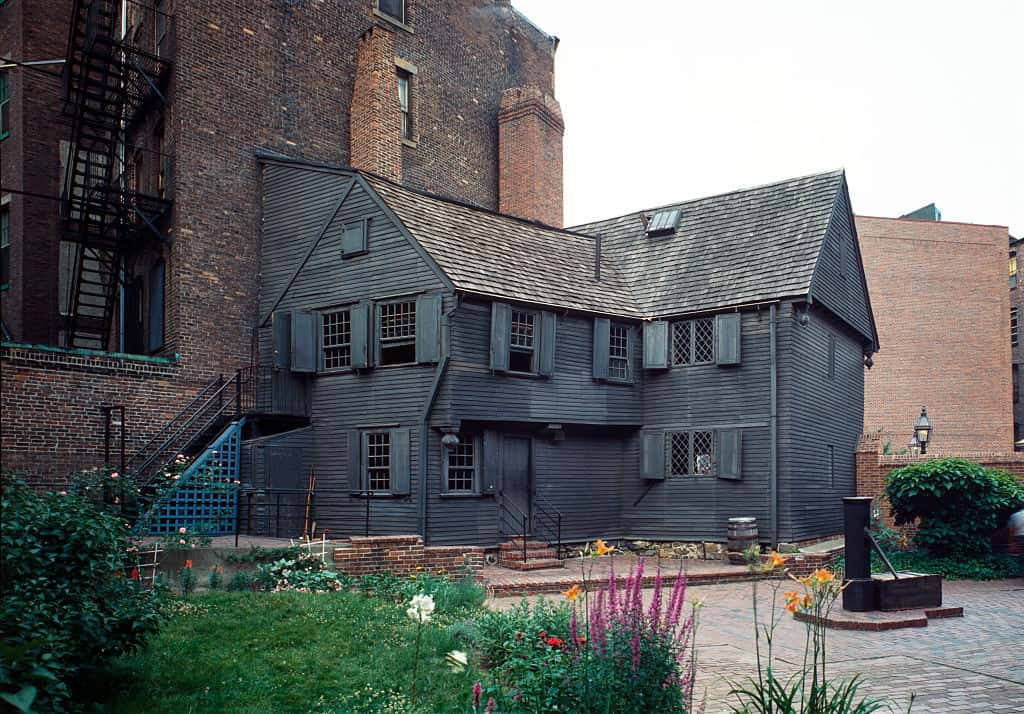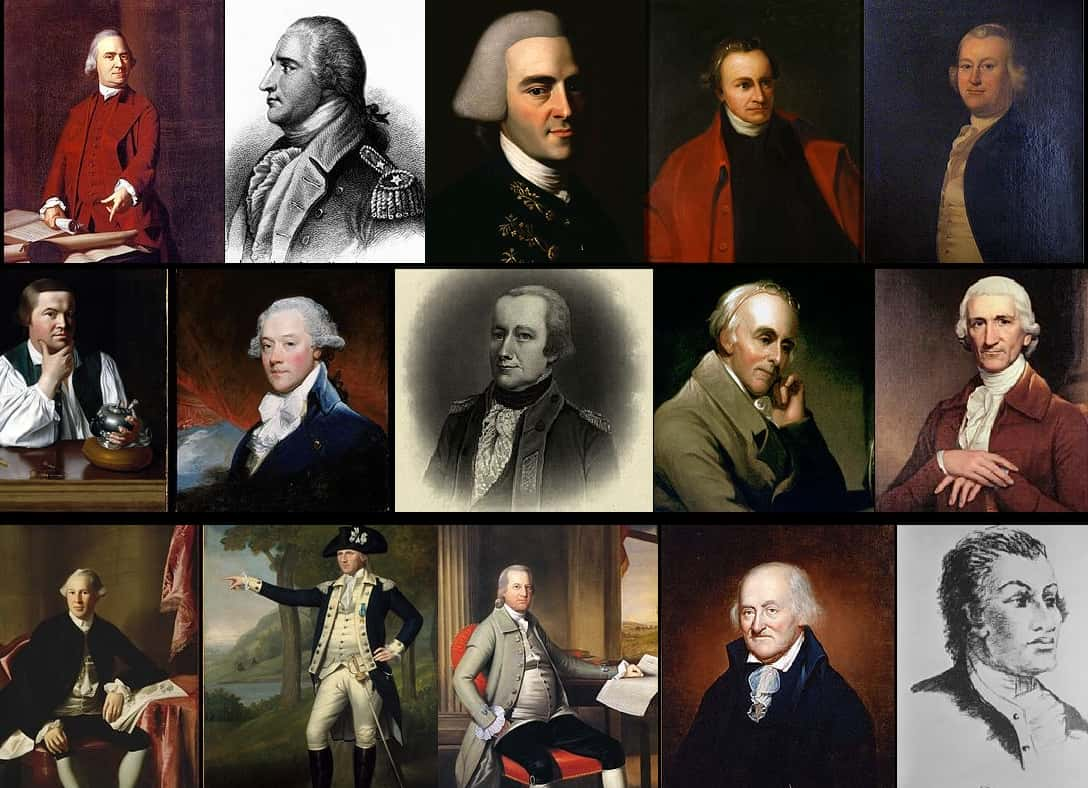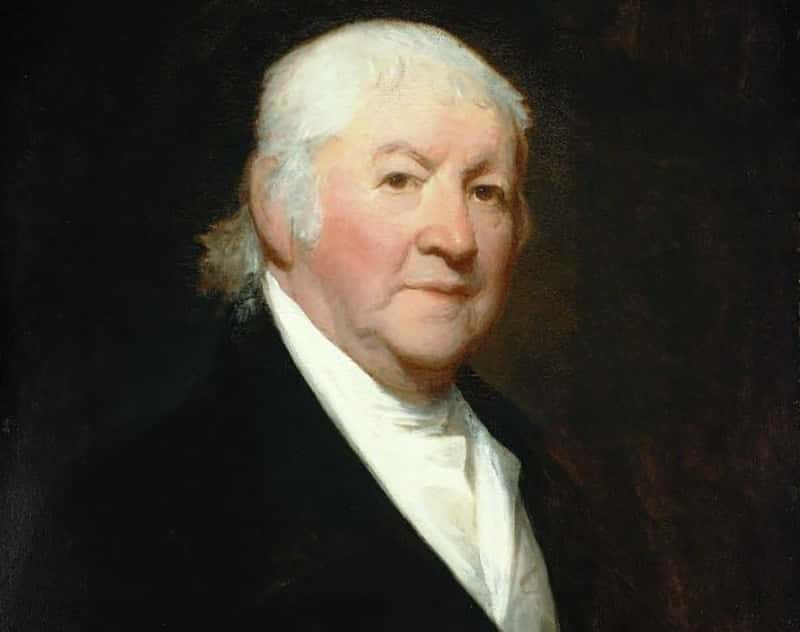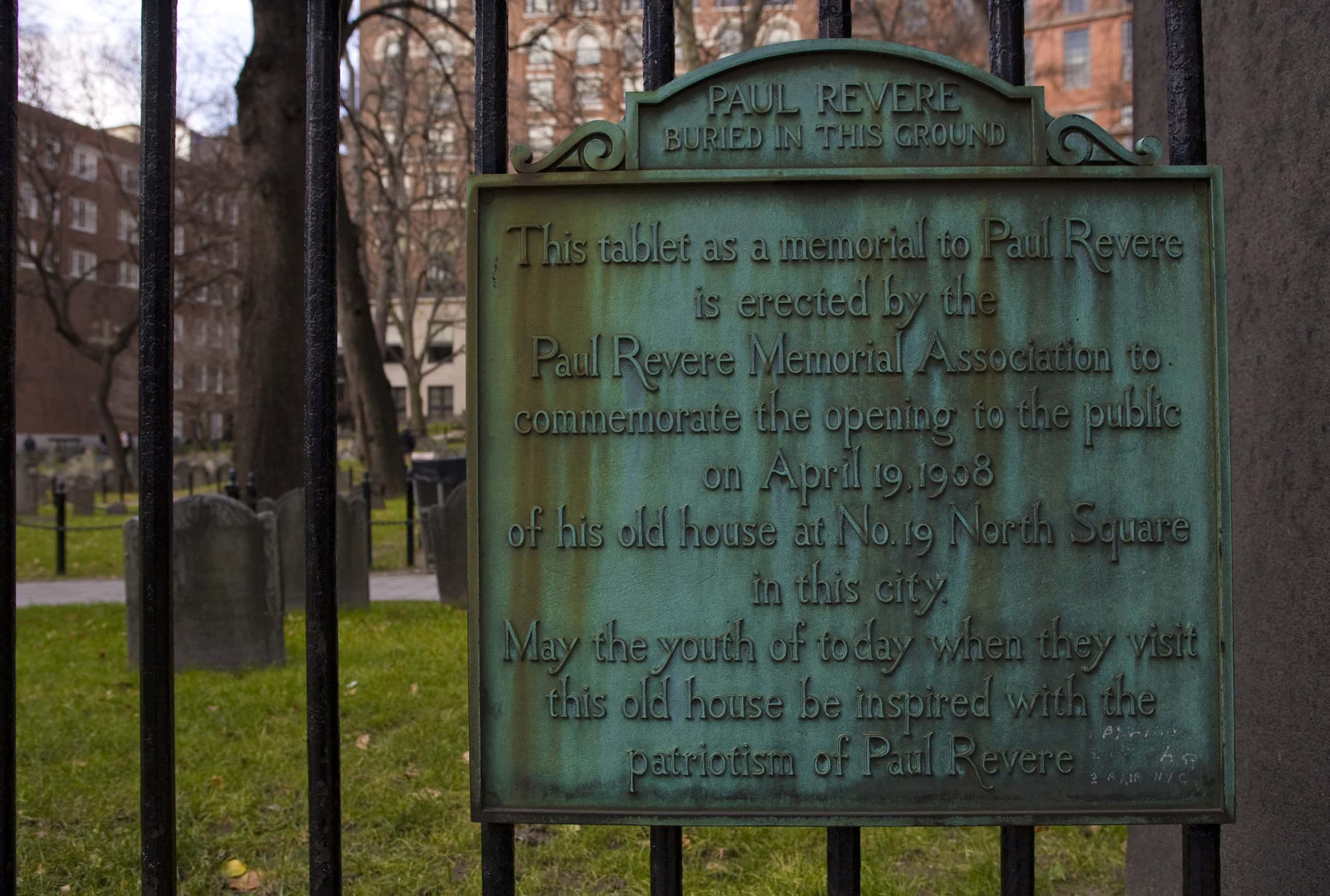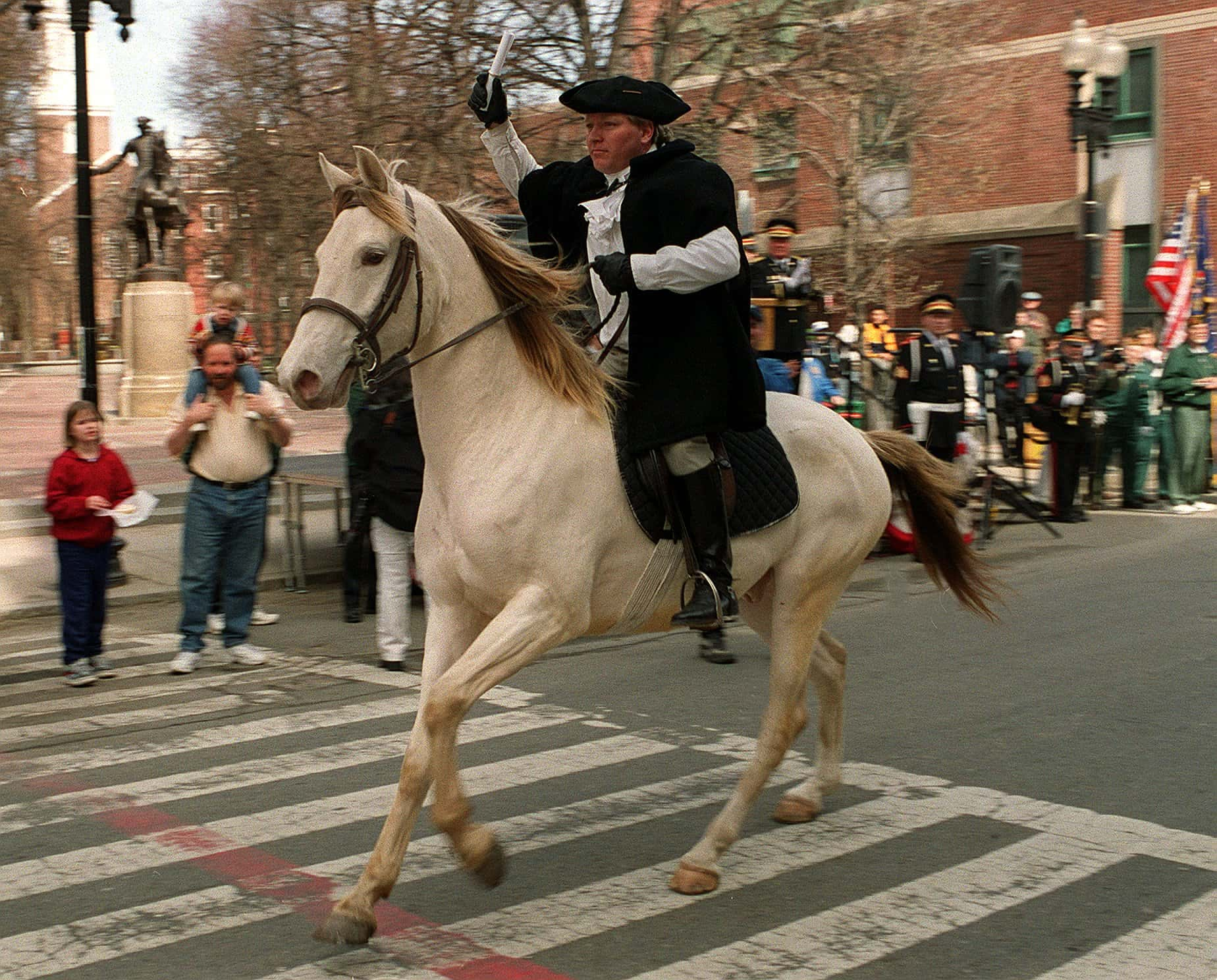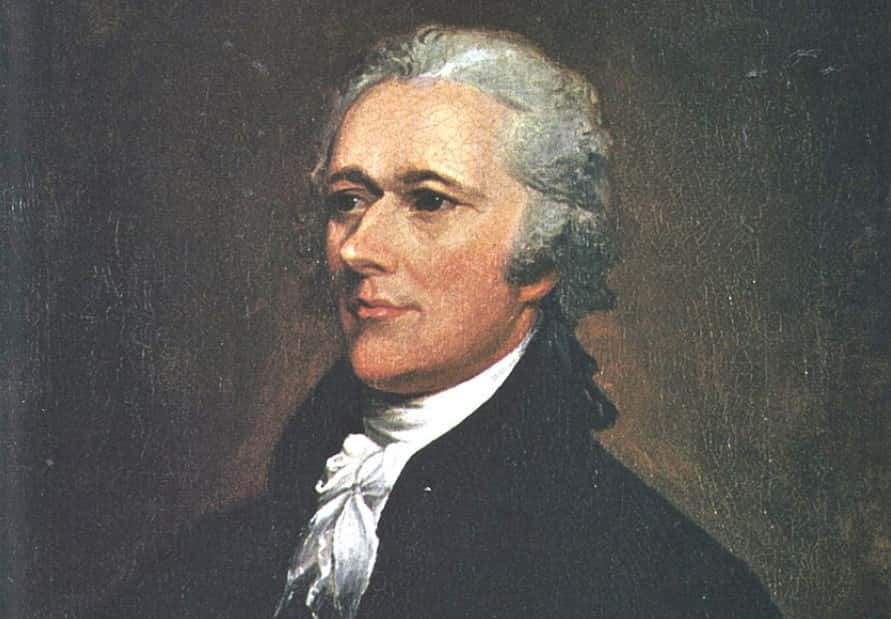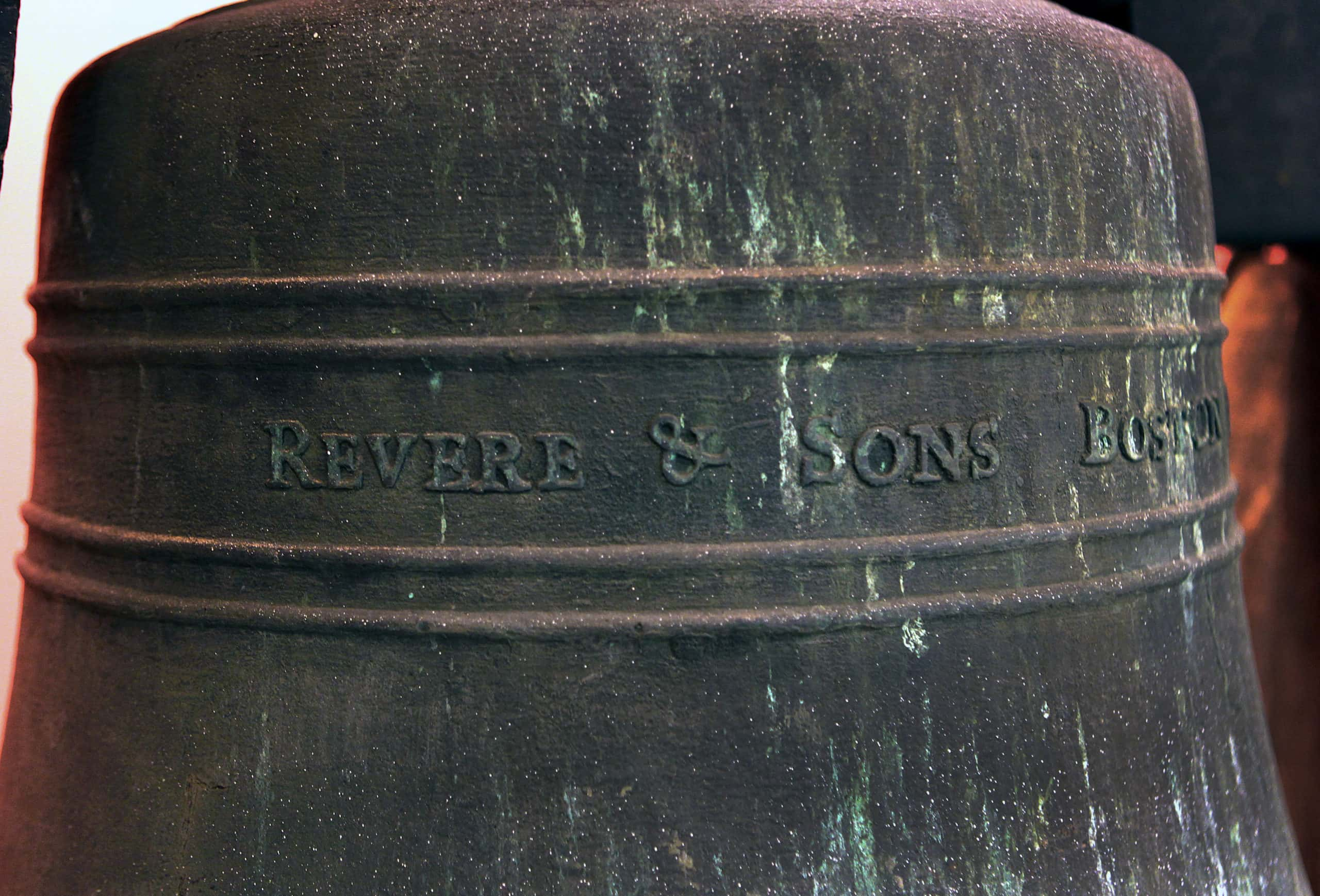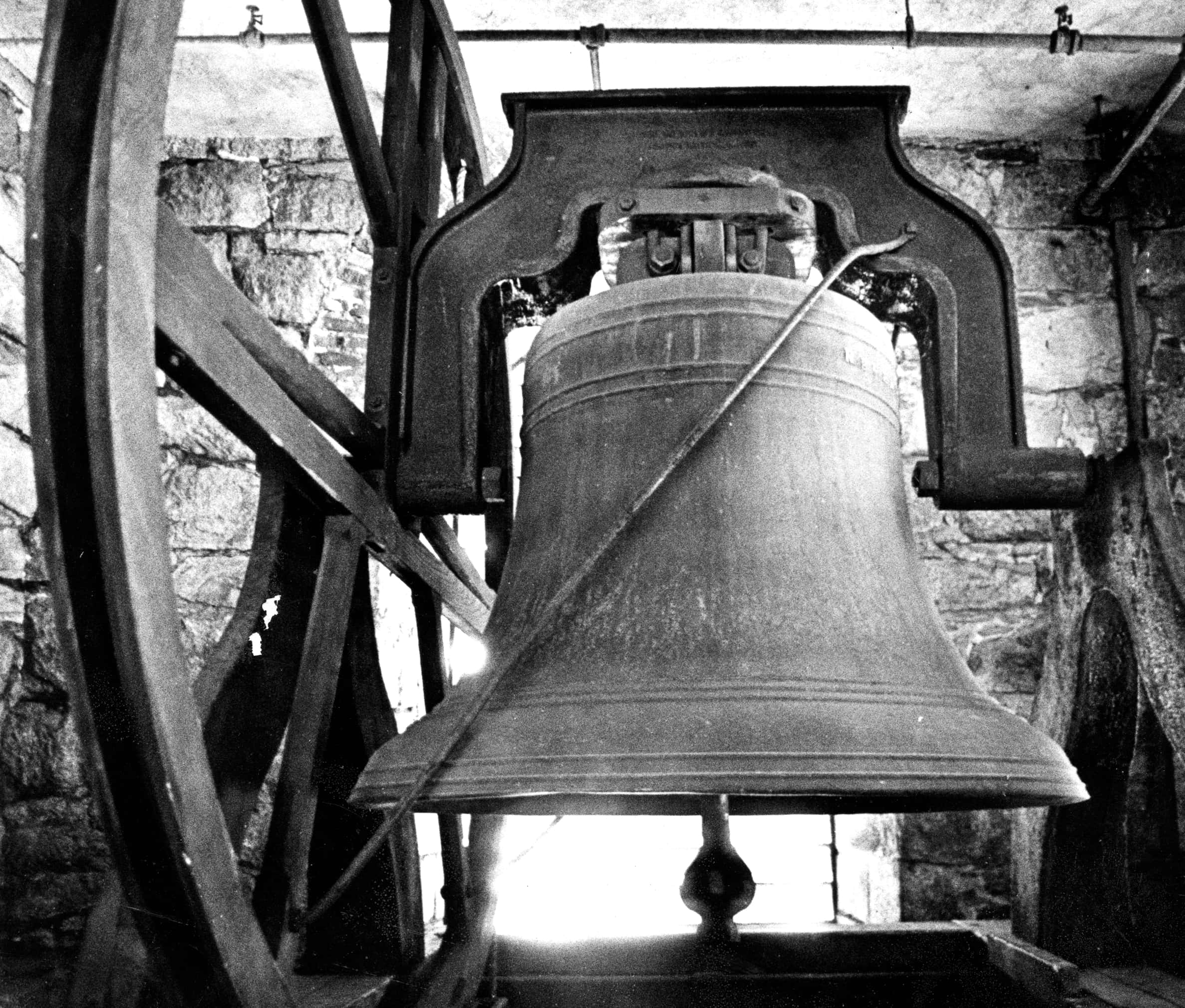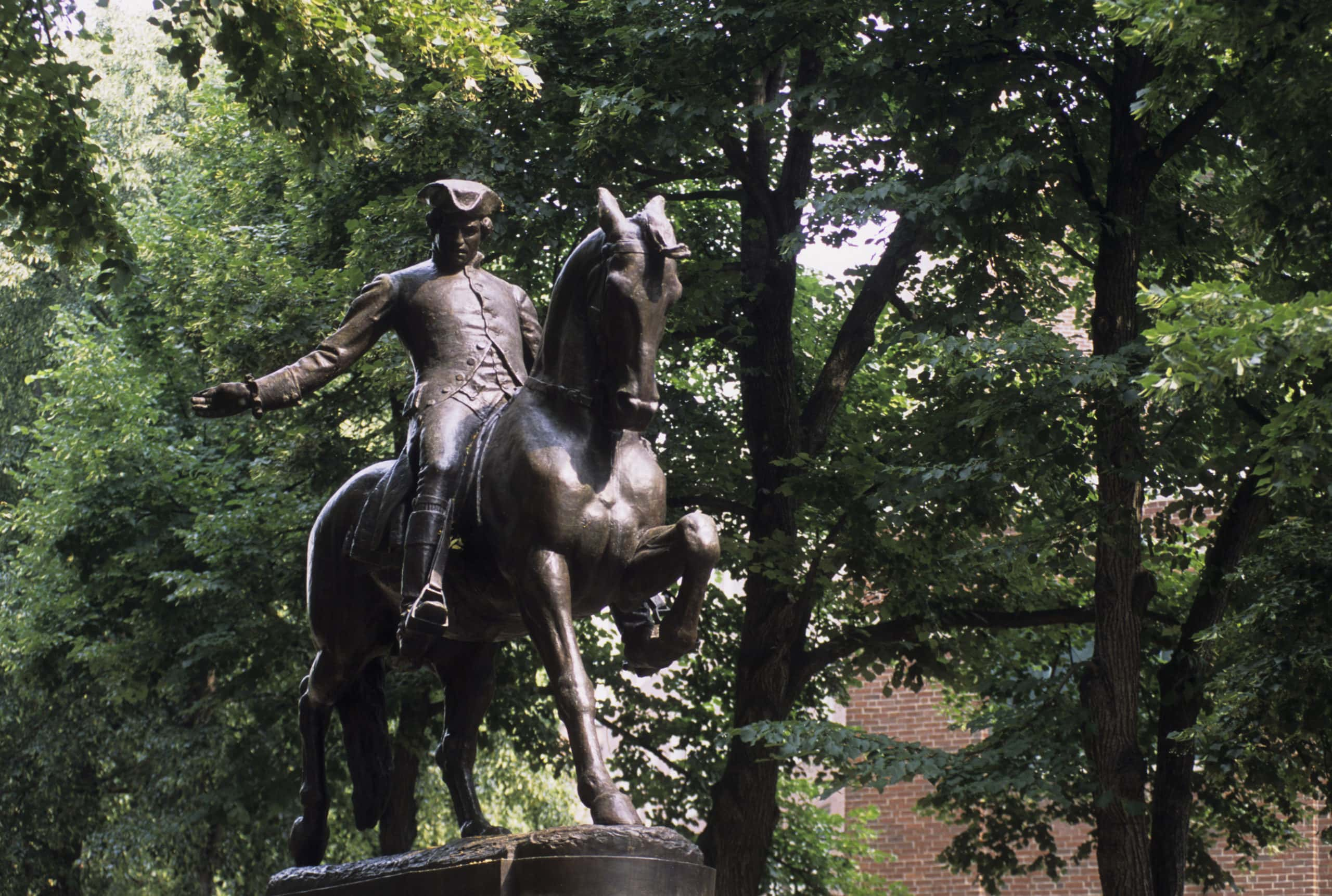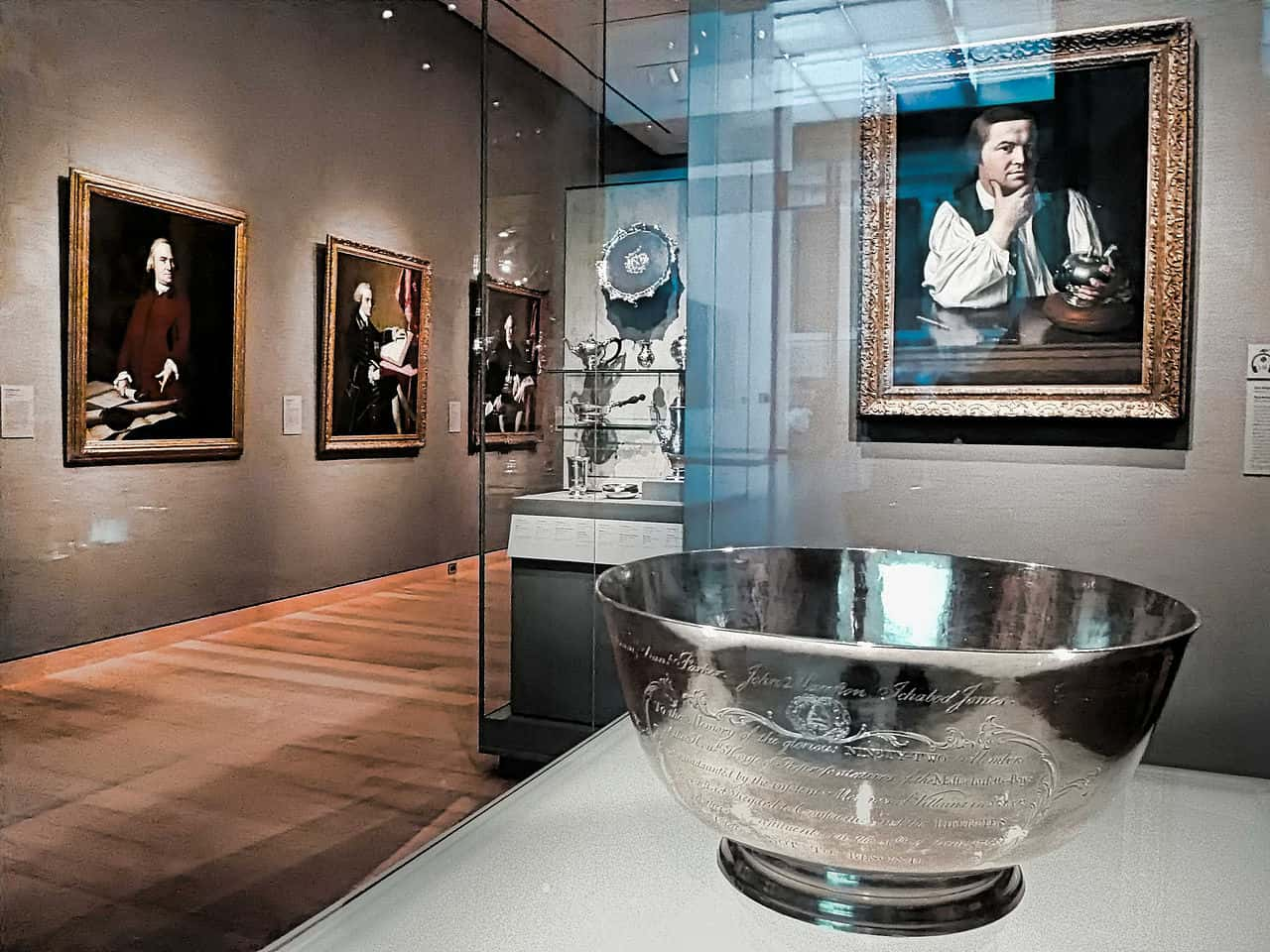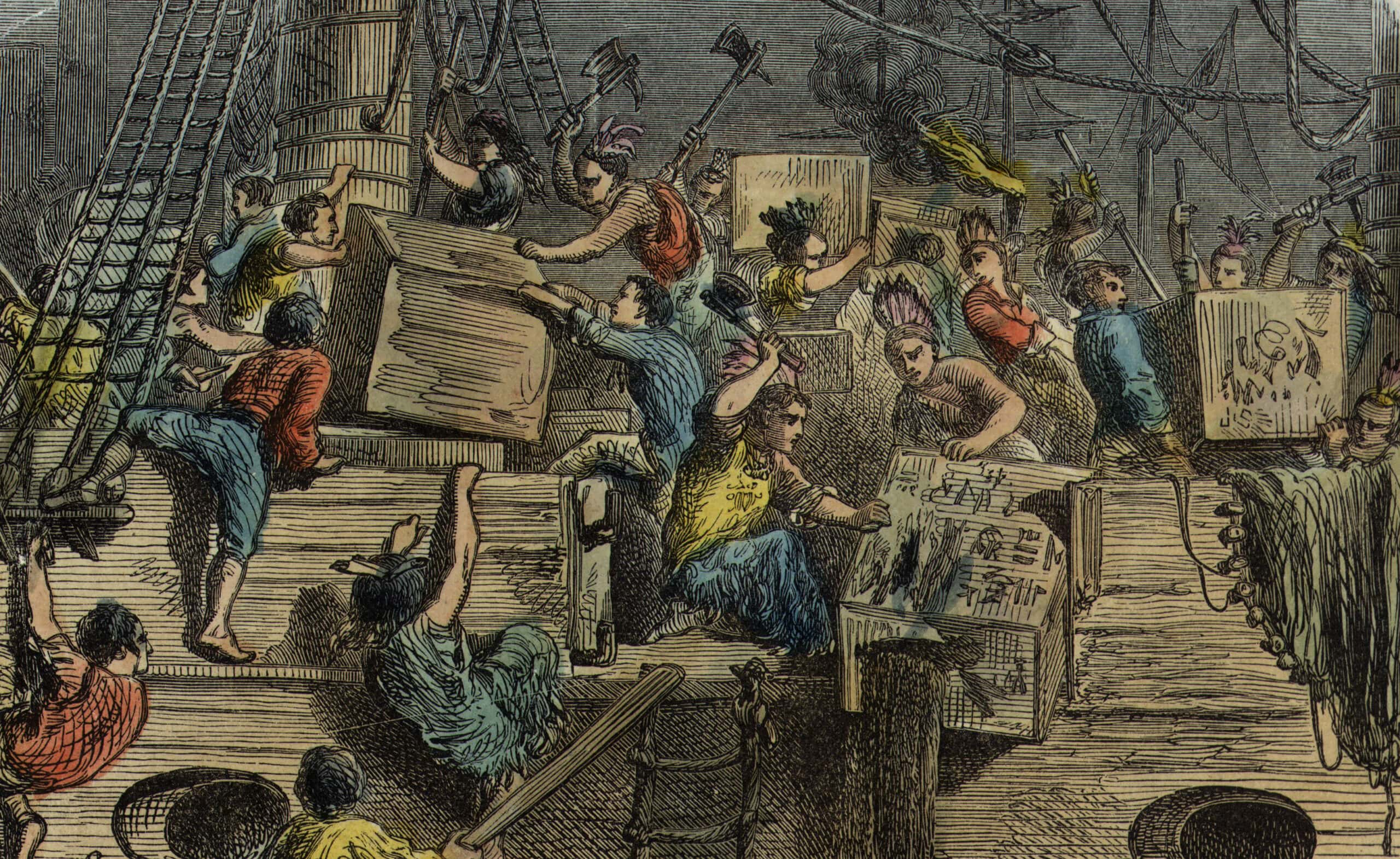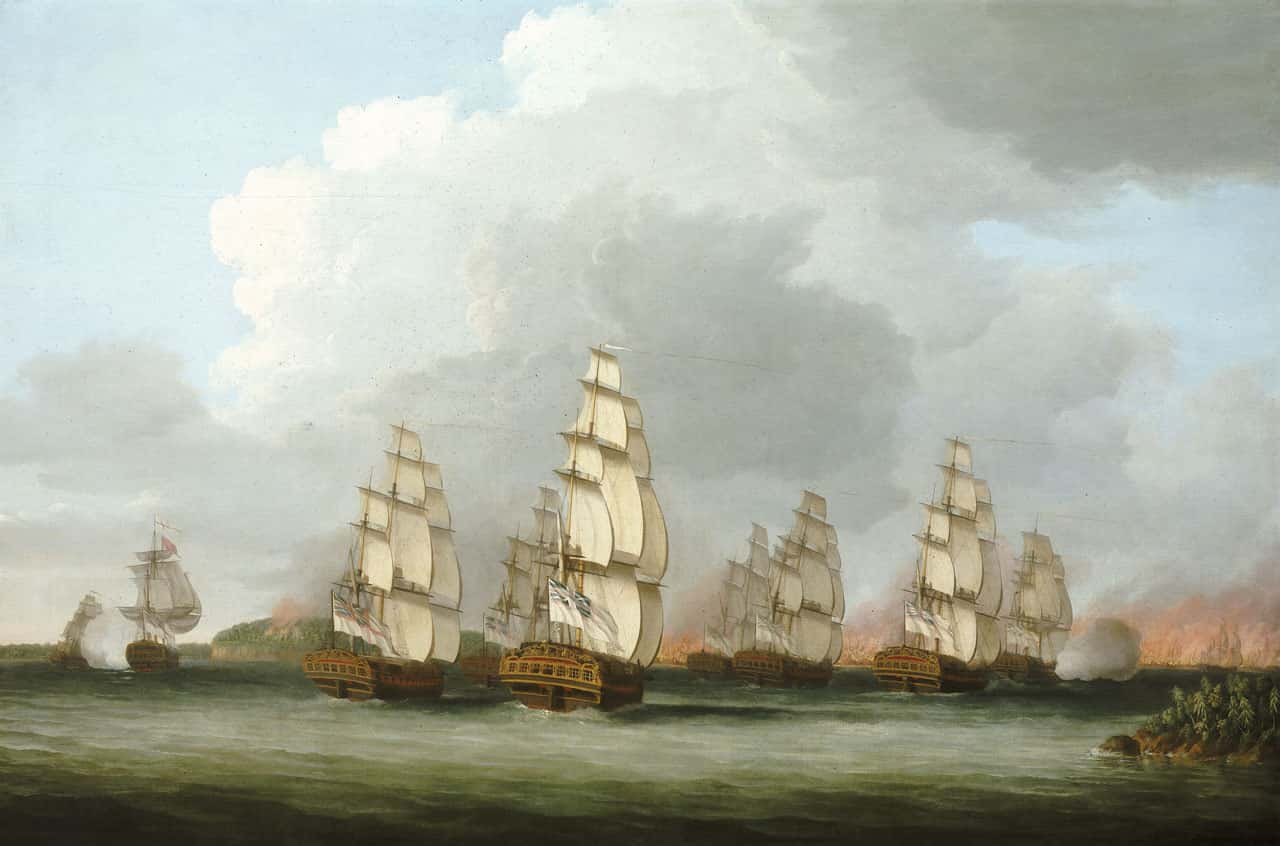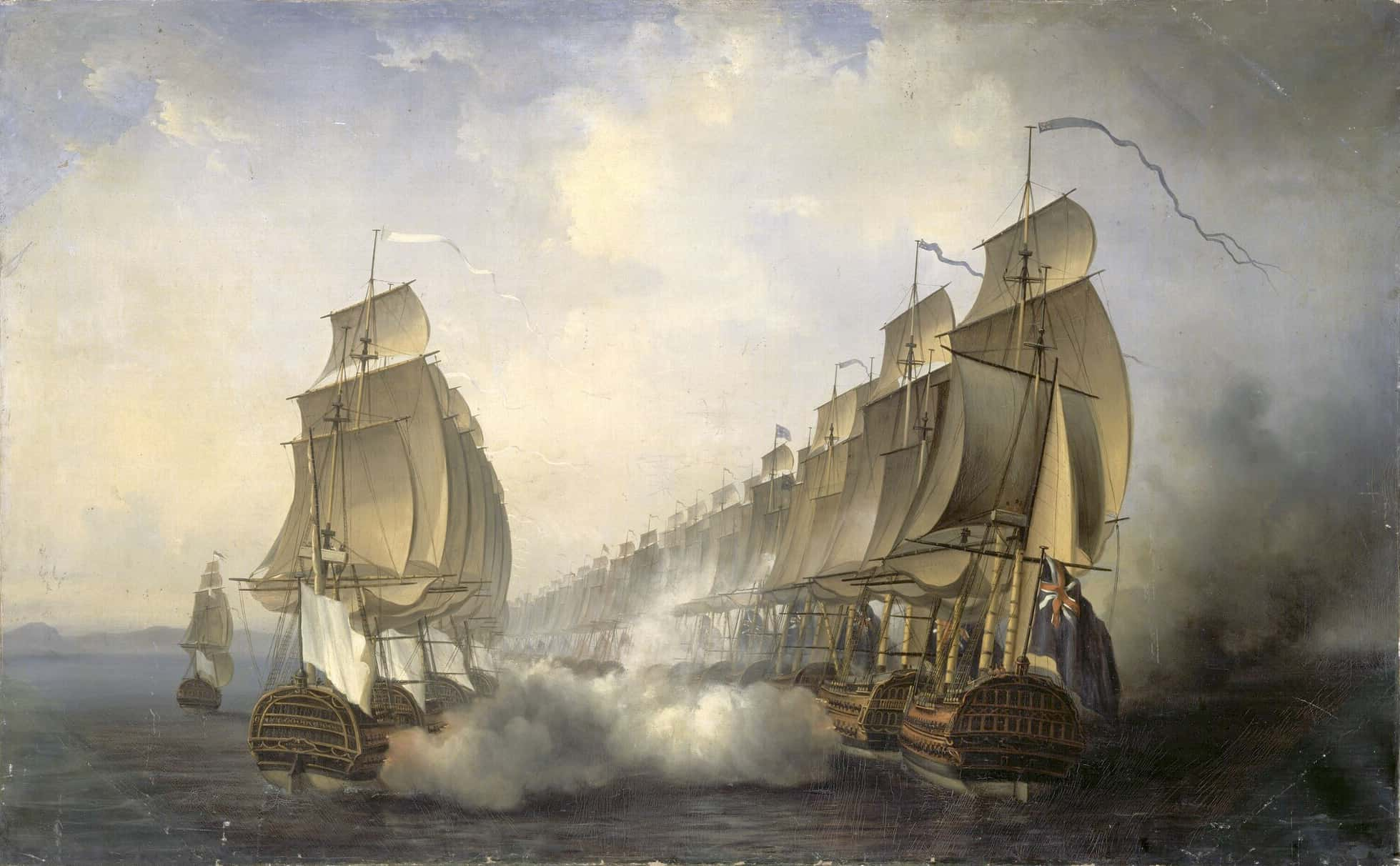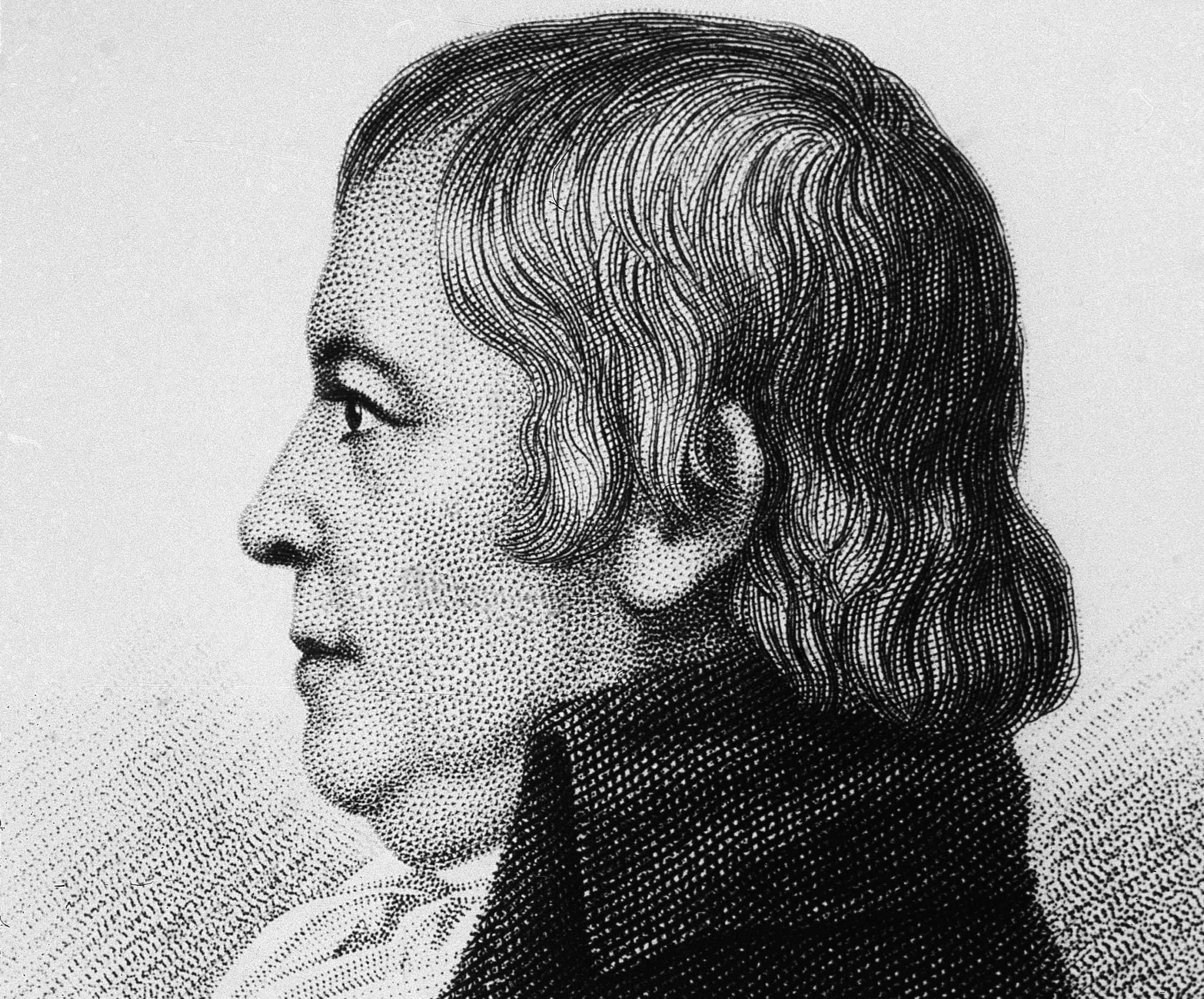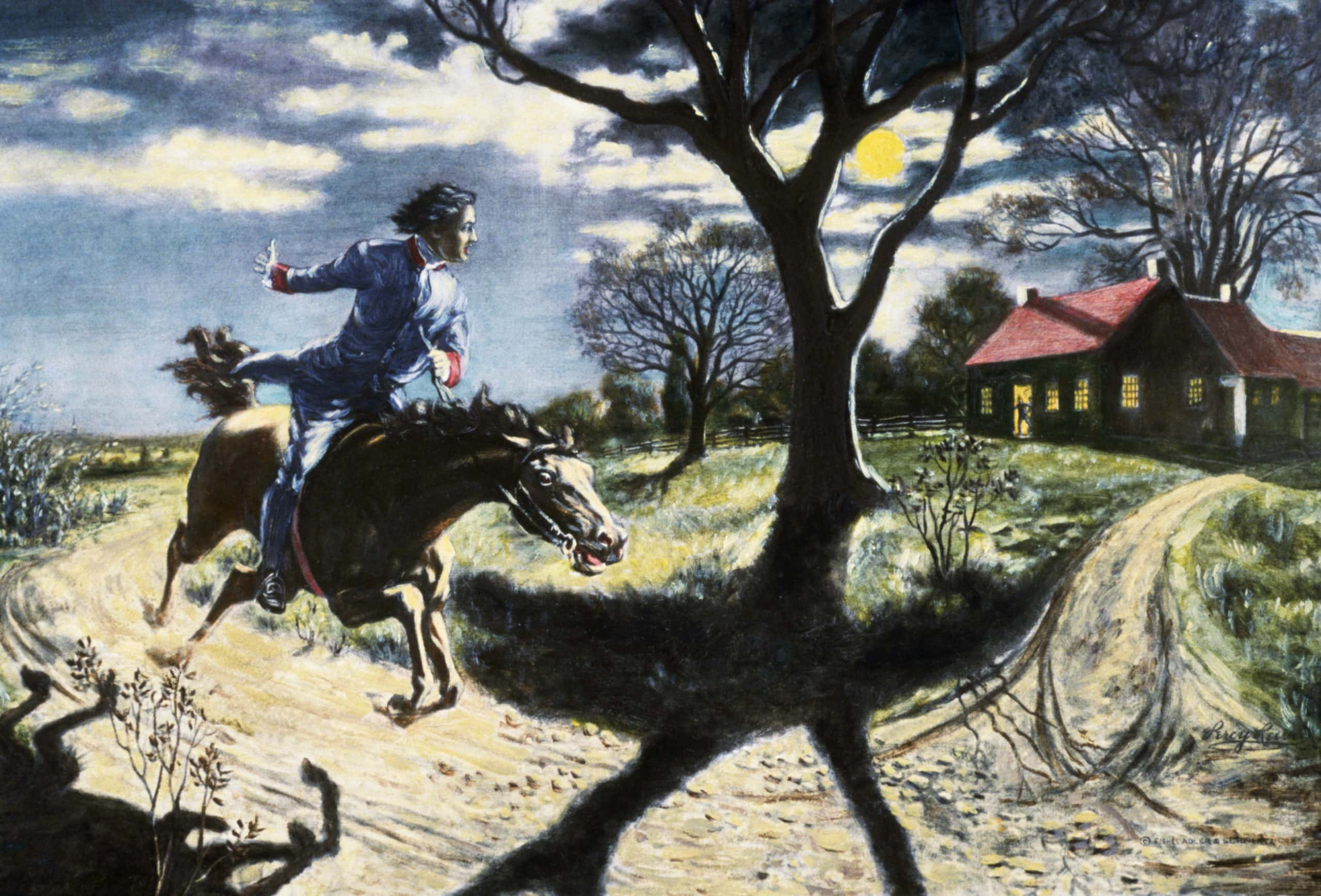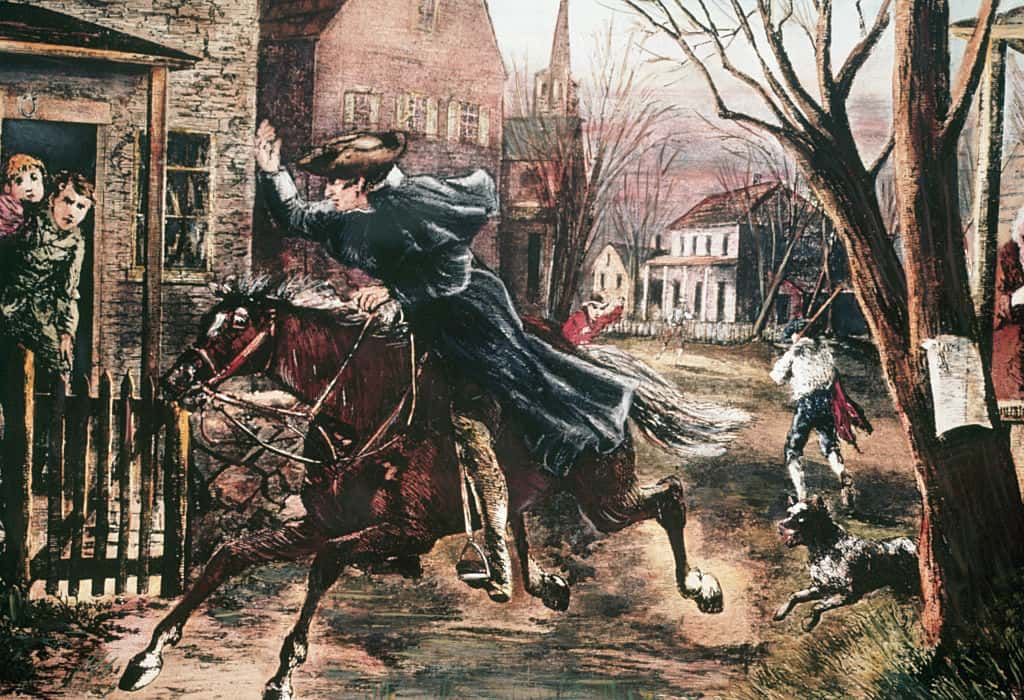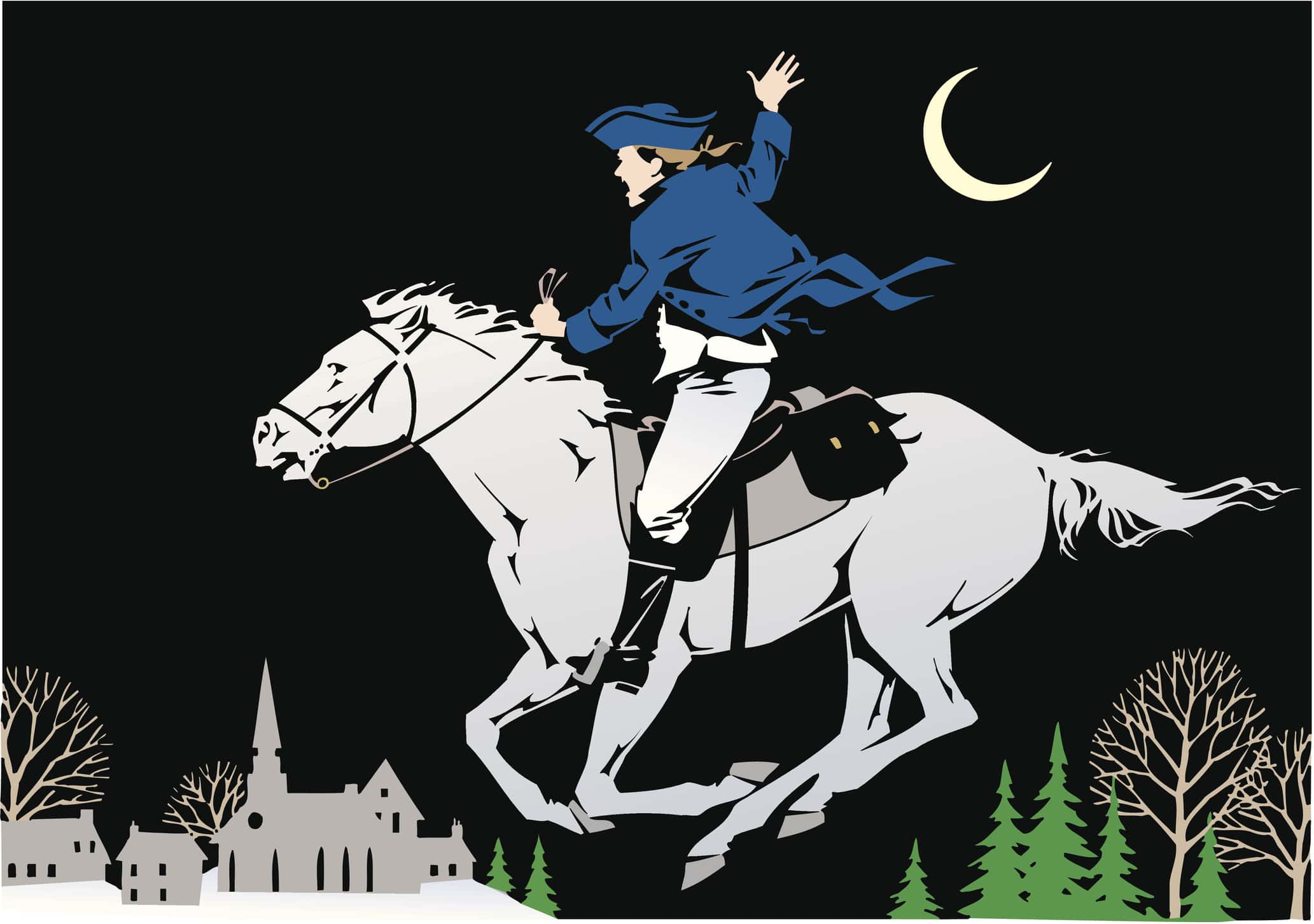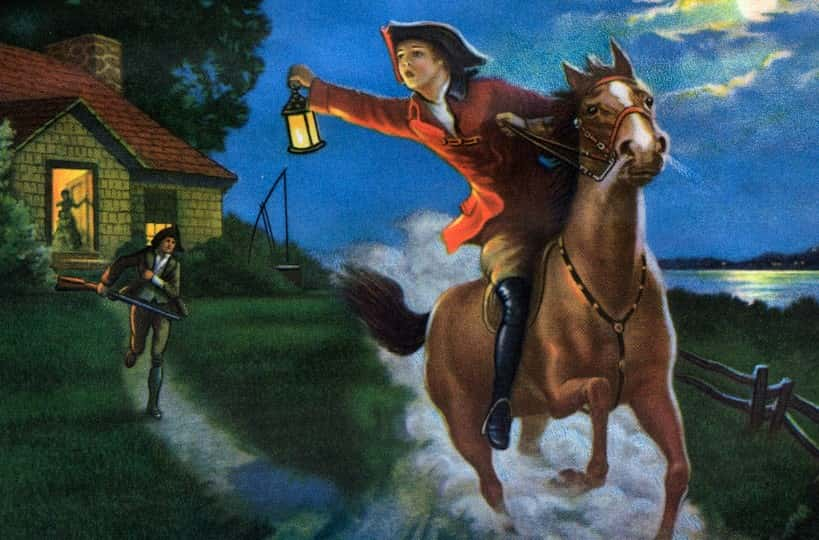Most people today will only know him for warning his fellow colonists that the British were coming, and they might not even remember where he was riding and where the British were coming from.
Despite that, there’s no denying that Paul Revere’s legacy has been long-lasting and passed into the American myth. But what exactly was this legacy? Who was the man behind the legend? How much of the legends are true? Here are 42 legendary facts about Paul Revere.
Paul Revere Facts
41. Sacre Bleu!
Revere’s background was actually part French. His father was named Apollos Rivoire when he immigrated to Boston as a teenager. By 1729, Apollos would change his name to Paul Revere, which was also the name he bestowed on one of his sons. Revere himself never learned his father’s native language, and in fact, fought against the French during the Seven Years’ War.
40. Mother’s Legacy
Revere’s mother was named Deborah Hitchborn, and her family was long established in Boston before she met her future husband, Apollos Rivoire.
Hitchborn’s family was in the shipping industry, owning a wharf in their own right. Revere, however, would become an apprentice to his father, who worked as a silversmith.
39. New Year’s Baby
Revere was born on New Year’s Day in 1735, though the calendars of that time were slightly different from modern ones. Therefore, his date of birth was listed as December 21, 1734, instead. Go figure.
38. I’m an Artist, Not a Historian!
One main reason for Revere’s fame and legendary status comes from the poem written by Henry Wadsworth Longfellow’s called The Midnight Ride of Paul Revere. Generations of students were given this poem to read, despite the fact that the poem is hardly an accurate depiction of history—more on that later.
37. It Was Something to Do While I Waited
When Revere’s father died in 1754, Revere was legally too young to inherit his father’s business, so he enlisted in the army instead. His service in the Seven Years’ War wasn’t very long, and by the time he left and returned to Boston, he was considered old enough to take on the silver shop as his own business.
It seems odd though, considering that if he’d been around today, 19 would have been a perfectly acceptable age to start a career.
36. Hard Times
Like many others in the Thirteen Colonies, Revere’s business suffered terribly after the Seven Years’ War was finished. This was due to a recession which hit Britain so hard that it had global implications. Despite his profession dealing with precious metals, Revere found work drying up at an alarming rate, which only got worse when the Stamp Act of 1765 was issued by the British to try and get extra funds from the colonists.
35. I’ll Fix Your Teeth to Put Bread in My Mouth
Eventually, the recession was so bad that Revere ended up taking on a new profession out of necessity. One of his friends happened to have a surgeon who was lodging in his house. Revere met the man and struck a deal where the surgeon taught him how to be a dentist. It was a skill which Revere would put to frequent use.
34. Paul the Tooth Fairy
Revere became especially known for providing false teeth in a time when they would have been in high demand. His false teeth were most often made of “walrus ivory or animal teeth,” which makes us wonder if he ever gave one of his patients a pair of tusks!
33. I Hope They Got Swimming Breaks
During the Seven Years’ War, Revere was commissioned as a second lieutenant in an artillery regiment at Fort William Henry, which was a fort guarding the southern end of New York’s Lake George.

History's most fascinating stories and darkest secrets, delivered to your inbox daily.
32. Just Call Me Master
One of Revere’s clients from his dentistry business was a doctor named Joseph Warren. Warren and Revere were not just friends but were also from the same Masonic lodge.
Revere in particular would rise high amongst the Freemasons, eventually becoming the Grand Master of Massachusetts’s Freemasons—talk about climbing the ladder!
31. Jack of All Trades
Revere proved that he was a man of many talents by also becoming an artist! He would make engravings into copper plates. His artwork would find its way into “books, magazines, political cartoons, and tavern menus.” Is it safe to call him a Renaissance Man?
30. Capturing History
One reason why Revere’s copperplate etchings became so widespread was that he used his artwork to produce anti-British propaganda in the buildup to the Revolutionary War.
One of his most famous artworks for the cause was a depiction of the 1770 Boston Massacre, which occurred when British soldiers, bombarded by protesting civilians, opened fire on the crowd and killed five people.
29. I Always Called them the Fine Nine, Personally…
In Boston, a small group of citizens was behind the first protests against legislation like the Stamp Act of 1765. This small group was known as the Loyal Nine, and they were known to be a precursor to the later organization called the Sons of Liberty—more on them later.
Revere was not a member of the Loyal Nine, but he was closely affiliated with its members, which included such people as John Avery and Benjamin Edes. Other famous figures of the Revolutionary War, like John Hancock, Joseph Warren, and John Adams would also keep close ties to the Loyal Nine.
28. What a Gentleman!
During his lifetime, Revere was known for his incredible sense of fashion and manners. In fact, when he was arrested by the authorities at one point, they initially saluted him as an equal before proceeding to take him captive.
27. The North Remembers
In 1770, Revere moved his large family into a house on North Square, which lay in Boston’s North End—as you might have guessed. This location was advantageous to Revere, as not only was the house a better fit for his family, but his shop was on Clarke’s Wharf, not far from his new home. As of 2018, the house continues to serve as a museum.
26. “Hakuna Matata” Was a Close Second Choice
The Sons of Liberty was a secret organization created by patriotic colonists who took issue with the British taxes being put upon the Thirteen Colonies. The expression “No taxation without representation” was actually the motto of the Sons of Liberty.
Revere was one of the main members of this organization, along with many of the most famous faces of the Revolutionary War. These included John Hancock, Patrick Henry, Samuel Adams, and interestingly, Benedict Arnold.
25. People Moved On Faster Back Then
In 1773, Revere’s first wife, Sarah Orne, passed away. They had been married since 1757 and had eight children together.
Naturally, Revere took some time to figure things out. And by that, we mean that he got remarried that very same year to Rachel Walker.
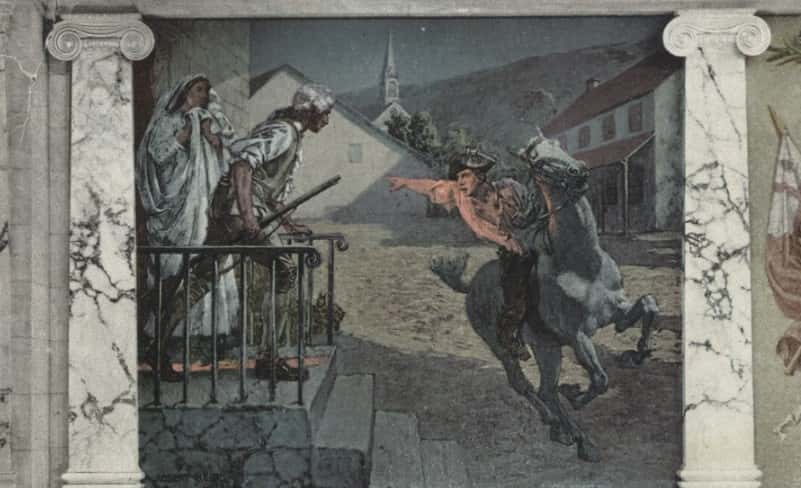 Flickr, State Library of Massachusetts
Flickr, State Library of Massachusetts
24. Isn’t it the Same God Either Way??
As a youth, Revere defied his father by going to a different branch of Christianity. While his father was a French Huguenot who worshipped at Puritan services, Revere was drawn to the Church of England instead—how ironic.
This was no laughing matter for Revere’s father; the arguments they had about the differences in Christian sects was so extreme that they got into a fistfight on at least one occasion. Revere bent to his father’s will and returned to Puritan faith, but only while his father was still alive.
23. Tragic Mortality Rate
Incredibly, Revere had 16 children! Eight of them were by his first wife, Sarah Orne, and the other eight by his second wife, Rachel Walker. While 11 of them would survive to adulthood, Revere would outlive all but five of them.
22. Final Rest
Revere lived to the ripe old age of 83, finally passing away on May 10, 1818. He was initially buried at Christ Church Cemetery before he was moved to Granary Burying Ground.
21. Planes, Trains, and a Horse
Aside from being a famous comedian and actor, American celebrity Steve Martin has also dabbled in music. One prime example of his music is a song called “Me and Paul Revere” which is all about Revere’s midnight ride, with an interesting twist. The song is sung from the perspective of Revere’s horse!
20. Horse Borrower
The horse which Revere rode didn’t even belong to him. Historians have dismissed the idea that Revere owned a horse, let alone been able to bring it in secret across the Charles River. The prevailing theory is that John Larkin loaned his horse to Revere.
19. A Memorable Name
Because of his high status in American history, Revere’s name has been used several times in tribute to him. This includes the towns of Revere in Minnesota and Massachusetts, Paul Revere Road in Arlington, and Revere Avenue in the Bronx.
18. Lost Chances
Aside from spending the postwar years as a prominent businessman, Revere dabbled in politics as well. In particular, Revere was an associate of Alexander Hamilton and greatly agreed with the Federalist view of how the United States’ economy should be run.
Sadly, as anyone who’s seen the musical might remember, Hamilton’s ambitions and dreams were cut short by a bullet fired by Aaron Burr during a duel.
17. Grisly First
One interesting record which Revere holds is that he was “the first person to practice forensic dentistry in the United States.” His longtime friend, Joseph Walker, was a prominent revolutionary who met his violent end at the Battle of Bunker Hill. However, it was uncertain at the time because he wasn’t identified right away.
Nine months after Walker’s death, Revere examined the corpse—presumably while pinching his nose—and identified some wiring that he himself had installed in Walker’s mouth to keep a false tooth in place. Revere presumably had a good long drink after that experience, groundbreaking as it might have been.
16. I Also Inspired Carrie Underwood
Revere didn’t just use copper to create artwork. Another one of his many business ventures was producing church bells. By some accounts, he designed and crafted more than 900 church bells in his lifetime. One of these bells still rings to this day in the King’s Chapel in Boston.
15. The Bells of Boston
It’s worth pointing out that Revere had had plenty of experience with church bells even before he began crafting them.
As a teenager, Revere worked as a bell ringer at the Eight Bell Church, though we can assume he didn’t also sing songs alongside three talking gargoyles.
14. Find Work or Starve!
Interestingly, Revere took bellringing as a serious and exclusive business, even at fifteen. He and his friends formed a private group which you couldn’t get into without unanimous vote by the members. They even set strict rules for themselves, so that they couldn’t beg for money and still remain within the group.
13. My Legacy Lives On
Speaking of Revere’s work with church bells and copper casting, his name is still prevalent in that industry to this day. Revere Copper and Brass, Inc. is a corporation which emerged from Revere’s original company, and it continues to produce to this day.
12. Let the Good Times Roll
After the war, Revere returned to silverwork, which had been his bread and butter. However, he also turned his businessman’s eye towards iron. He established an iron foundry in Boston’s north end which proved a massive success that he’d never previously known.
11. I Always Hated Tea…
Being a patriotic Bostonian, it should surprise nobody that Revere was one of the ringleaders behind the Boston Tea Party. For those of you who are looking confused, the British imposed taxes on tea imports by the colonists, which enraged them to the point of protest.
Things boiled over—pun intended—on December 16, 1773, when three British ships were boarded by colonists who proceeded to dump their cargos of tea into Boston Harbor. There’s no word, however, on whether Revere dressed up like a Mohawk warrior, as some of the colonists did to hide their identities.
10. Operation: Penobscot
Despite his success on the production angle of the Revolutionary War, Revere also served the cause as an officer on the front lines.
In the summer of 1779, the British base at Penobscot Bay was the target of a “major expedition” by the patriot forces, which included Revere as the commander of the artillery units with the rank of Lt. Colonel. The expedition also included 44 ships and more than 3,000 infantrymen against 700 British regulars and ten warships.
9. The Reinforcements Are Coming!
Despite having all the advantages, however, the Penobscot Expedition proved to be a disaster. The naval and land commanders constantly argued over how to carry out the expedition, with Revere also being involved in the squabbles.
In between their incompetence and the arrival of British reinforcements, the Patriots were forced to retreat. The loss of hundreds of men and their entire fleet made the Penobscot Expedition “the United States’ worst naval defeat until Pearl Harbor 162 years later in 1941.” Ouch…
8. Unjust and Unfair!
Revere didn’t emerge unscathed from the disaster of the Penobscot Expedition. Enemies he’d made were quick to accuse him of cowardice and disobedience during the campaign.
Revere was dismissed from the militia, forced to resign in shame. For his part, Revere furiously demanded a proper court-martial to properly deal with the accusations, but his request was denied.
7. And I Just Had to Wait Three Years
Revere did eventually get his court-martial, but not until 1782. This subsequent investigation cleared him of any wrongdoing during the Penobscot Expedition. Better late than never!
6. Spying Over Some Drinks
In the mid-1770s, Revere formed an amateur spy ring in response to the brewing conflicts between the Patriots and loyalists of the Thirteen Colonies. Named the “Mechanics,” Revere and his associates would report on “the Movements of British Soldiers” and pass on any information they could acquire to their allies.
Rather than a secret tower or underground base, the Mechanics’ headquarters was the Green Dragon, Revere’s favorite pub and watering hole. Not exactly subtle, but what the hey!
5. Explosive Contributions
During the Revolutionary War, a serious concern among the patriot forces was a lack of gunpowder. Since there was only one powder mill in all of the Thirteen Colonies, and he’d already proven himself to be a highly adaptable jack-of-all-trades, Revere was sent to study the details of the mill in Philadelphia so that a second one could be built exclusively for the patriot cause.
Revere’s mission was successful—despite the owner demanding a hefty bribe for his information—and a powder mill was built at Stoughton, which is now known as Canton, in Massachusetts.
4. Did He Also Pee in a Public Park?
During the 1960s, when it was a bit more common to view American history with a cynical eye, a story emerged in Boston that Revere’s midnight ride had consisted of a heavily drunk Revere screaming his head off about the British when he was supposed to be quiet about the whole thing. His rallying of the Patriots was a pure accident on his part.
Sadly, as funny of an image as that makes, there isn’t any evidence to suggest that this is how it went down. However, there is a lot of Revere’s midnight ride which is frequently misremembered—it really didn't go down like we learned in the history books.
3. I Never Said That!
If there's one thing that we know about Paul Revere, it's that he rode from town to town shouting "The British are coming!" Sure, some parts of his legend might be untrue, but that, at the very least, must be true, right? Sadly, no—that is yet another example of history being misremembered or invented for the sake of a good story.
Revere would never ride from town to town shouting his head off that the British were coming. For one thing, the message was supposed to be delivered as subtly as possible to avoid the towns’ loyalists from warning the British that their plans were discovered. No shouting involved. Moreover, the colonists still considered themselves to be British, so Revere crying that the British were coming would have meant nothing. The correct term for that period was “the Regulars.”
2. One of a Crowd
As you can imagine, covert warnings take far more time to pass along than if you’re just galloping along shouting your head off. 40 men took part in this system of warning the rebels that their enemies were on the way.
Revere is one of only three men whose names we know for sure took part in this ride. The other two were William Dawes and Samuel Prescott.
1. Some Hero…
Contrary to the heroic tale we usually hear, one account of that night alleges that Revere, Dawes, and Prescott went to a pub to "refresh" themselves while they were supposed to be warning their compatriots. It was then that British soldiers entered the pub in a wacky coincidental chance-meeting. Dawes and Prescott escaped the pub, leading their foes on wild goose-chases throughout the night. Meanwhile, Revere surrendered without a fight and was taken prisoner. We do know for sure that Revere was captured that night, and in one of his letters, he does refer to stopping to refresh himself, likely with an ale, but the exact circumstances of their run-in with British soldiers aren't completely clear. Still, it wouldn't exactly be a great look for one of the heroes of the Revolutionary War to get caught sneaking a beer while on the job.

